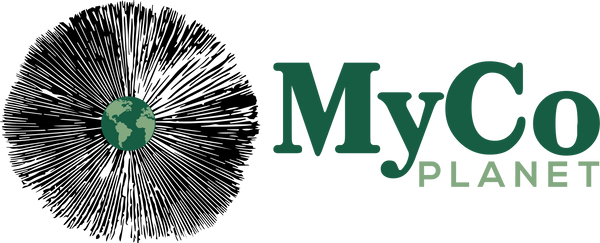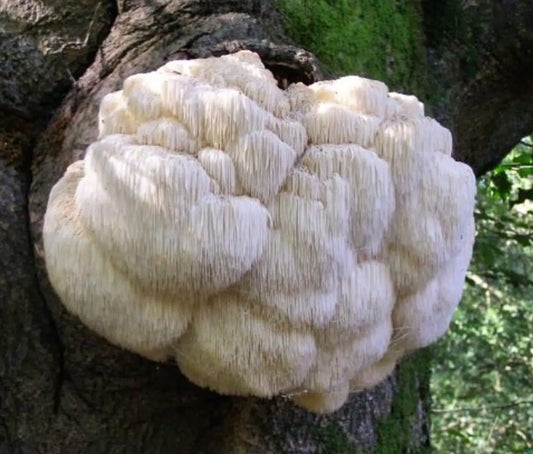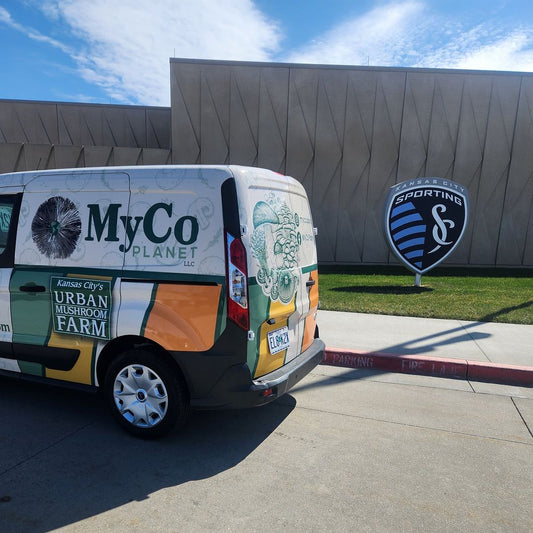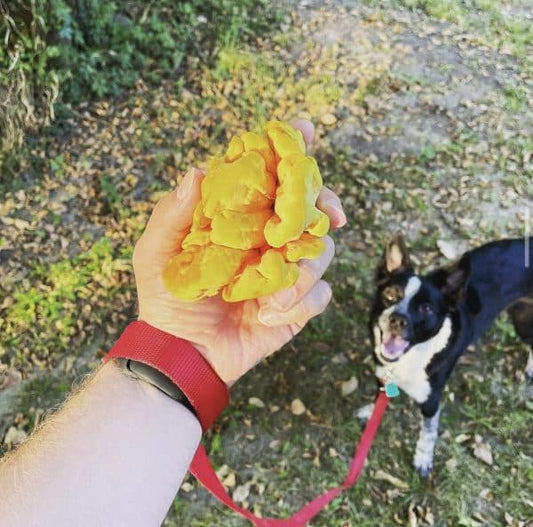The health benefits and medical benefits of some specific mushrooms like chaga, reishi, shiitake, turkey tail, cordyceps, maitake, and lion’s mane are amazing. After mushrooms are harvested, they must be consumed within days or stored by either freezing them, dehydrating them, or making a mushroom tincture. If you make mushroom tinctures at home, you can store your mushroom’s bioflavonoids for years. Medicinal mushrooms are more easily absorbed when taken in a tincture form, providing a more concentrated source of beneficial compounds.
Mushroom tinctures are a great way to get the beneficial compounds found in mushrooms into your body. Mushroom tinctures have been used for centuries in traditional Chinese medicine and modern science is beginning to uncover the many health benefits of mushroom extracts. Studies suggest that taking mushroom tinctures can help boost your immunity, improve digestion, reduce inflammation, and even enhance mental clarity.
How To Make Mushroom Tinctures At Home?

You can make mushroom tinctures at home by soaking mushrooms in high-proof alcohol or both high-proof alcohol and hot water, known as a dual extraction. After letting mushrooms sit in either of these solvents for an extended period of time, filter out the mushroom material and save the tincture in a glass eyedropper bottle for future use.
What Is A Mushroom Tincture?
A mushroom tincture is a concentrated solution of bioavailable compounds present in mushrooms without the chitin that makes up the bulk of the mushroom. To create a mushroom tincture, soak mushrooms in high-proof alcohol or high-proof alcohol along with hot water. When left to sit in these solvents, the beneficial compounds contained within these specific mushrooms will leach into the solution.
Once these compounds have seeped into the alcohol solvent, they last for a long time and are easy to transport and store.
What Is A Mushroom Extract?
A mushroom extract is similar to a mushroom tincture with the only difference being that an extract doesn’t use alcohol as the solvent. A mushroom extract can be made by allowing mushrooms to sit in hot water or vinegar.

What Compounds Are Contained In A Tincture?
While specific to whatever mushroom was used to make the tincture, beta-glucans, phenolic compounds, and terpenoids are concentrated in the solvent.
What are the Benefits Of A Mushroom Tincture?
Mushroom tinctures are a concentrated array of health-promoting mushroom compounds. Mushroom tinctures don’t contain chitin, the fibrous material that has a tendency to irritate the stomach in some individuals. Since the health benefits of mushrooms are unparalleled, anyone who gets nauseous when they eat mushrooms should try consuming a mushroom tincture and note how they feel. In most cases, individuals who can’t eat mushrooms have no problem consuming a tincture, as a mushroom tincture is easily digestible.
How To Make An Alcohol-Based Mushroom Tincture?
To make a mushroom tincture, add the mushrooms you want to extract to a glass jar, add food-grade alcohol that is at least 80 proof, and let it sit for 6 weeks. I prefer using Everclear, as it is 180-proof and flavorless. Note that many people use 80-proof vodka, but the higher the proof, the better the extraction.
After 6 weeks, filter the mushrooms out of the alcohol, and use a cheesecloth to squeeze out the remaining alcohol left in the mushroom material. You can discard the mushrooms or use them in your recipe of choice. Now, filter out any remaining mushroom tissue from the alcohol and pour the alcohol tincture into glass eyedropper bottles.
An alcohol-based mushroom tincture contains diterpenoids and triterpenoids, but little to no beta-glucans.
How To Make A Hot Water-Based Mushroom Extraction?
Making a hot water-based mushroom extraction is nearly exactly like making tea. Simply heat up some water in a pot and add the mushroom into it, letting it steep for at least 30 minutes. If you want an even stronger extraction, let the mushrooms sit in hot water for days.
A hot water mushroom tincture will contain beta-glucans, but not many terpenoids.
A hot water mushroom tincture won’t last as long as an alcohol tincture so it must be used relatively quickly.
For a longer shelf life and a wider selection of mushroom compounds, it is necessary to perform a dual extraction.
What Is A Dual Extraction?
A dual extraction involves both hot water and alcohol extraction to create a mushroom tincture. A dual extraction ensures both water-soluble and alcohol-soluble mushroom compounds will be contained within a tincture.
How To Make A Dual Extraction Mushroom Tincture?
Add fresh mushrooms into a blender and add enough high-proof alcohol to submerge the mushrooms. Blend up the mushrooms and add the mixture to a Mason jar. Then, cover the jar and leave it to sit for at least 10 days, shaking it up at least every day. If you want to maximize the number of beneficial health compounds in your mushroom tincture, allow the mushrooms to sit in the alcohol for 6 weeks, as described in the basic alcohol extraction method.
At the end of alcohol extraction, strain out the mushroom material and add that same material to a pot. Now, add water, bring it to boiling, and then allow it to simmer for two hours.
At this point, strain off the mushrooms and add the water extraction to the Mason jar that contains the alcohol extraction. Cover the jar and shake up the extract.
If you have copious amounts of mushrooms on hand, it is better to perform both the alcohol-based extraction and hot water-based extraction with a fresh batch of mushrooms instead of reusing the mushrooms for the water-based extraction. Since alcohol destroys some of the beta-glucans, using a brand-new batch of mushrooms will make for a more viable tincture.
Since there will still be some mushroom material in the extract, filter it out. A dual extraction usually results in far more liquid than you would like to deal with. To solve this issue, boil off some of the alcohol and water until there is only a concentrated amount of liquid remaining.
Pour the completed tincture into dark, glass eyedropper bottles for storage. Now that your dual extraction mushroom tincture has been created, store it in a cool, dry place where it should last for around 3 years.
Again, you can use the mushroom material left as an ingredient in any recipe.
What Mushrooms Are Best In Tincture Form?
While any edible mushroom can be turned into a tincture, some of the best include chaga, reishi, shiitake, turkey tail, cordyceps, maitake, and lion’s mane.
Both reishi mushrooms and chaga mushrooms are typically consumed in an alcohol-based tincture because they contain high quantities of terpenoids that are not water-soluble.
Mushrooms that are often turned into extractions include shiitake, turkey tail, cordyceps, maitake, and lion’s mane. These mushrooms have more water-soluble compounds like beta-glucans so they don’t require an alcohol-based solvent.
In any case, making a dual extraction tincture from all the mushrooms listed above, using both alcohol and hot water, will pull out nearly all the health-promoting compounds. This is the way to go if you want a broad-spectrum mushroom tincture.
How To Consume A Mushroom Tincture?
There are an infinite number of ways to consume a mushroom tincture. The most basic way involves squeezing an eyedropper full of the mushroom tincture under your tongue. Other ways involve adding a dropper or two of mushroom tincture to your coffee, beverages, or food.
The best time to take a mushroom tincture is about half an hour before each meal. However, a mushroom tincture can be consumed at any time. Avoid going overboard, and limit mushroom tincture consumption to a maximum of 3 teaspoons a day.
What Are The Health Benefits Of The Extracted Compounds In A Mushroom Tincture?
A mushroom tincture performed by dual extraction contains a wide range of health-promoting compounds. Let’s take a look at some of the health benefits of these compounds.
Beta-Glucans
Beta-glucans are extracted from mushrooms through the hot water extraction method. Ideally, perform the dual extraction with both alcohol and hot water for high concentrations of beta-glucans and the other health-promoting compounds contained in mushrooms.
Beta-glucans have been shown to improve the immune system, reduce incidences of flu, and cancer, and can even mitigate immune system degradation due to stress. (Rahar et al., 2011)
Terpenoids
Terpenoids are extracted from mushrooms with alcohol and are one of the most notable health-promoting compounds in mushrooms.
Terpenoids include ganoderic acid, diterpenoids, and triterpenoids, among others. These terpenoids are known to kill cancer cells, reduce inflammation, reduce blood pressure by inhibiting the angiotensin-converting enzymes, prevent liver damage, and offer strong antioxidant protection. (Dasgupta & Acharya, 2019)
Phenolic Compounds
Phenolic compounds are also extracted with alcohol and are responsible for a wide range of health-promoting properties.
Phenolic compounds offer antioxidant protection, are anti-inflammatory, reduce tumor formation, lower blood sugar, improve bone health, and possess antimicrobial action. (Abdelshafy et al., 2021)
Which Mushroom Tincture Or Extracts Are Right For You?
I would argue that there are 7 different mushroom extracts that are all critical for good health and should all be consumed on a regular basis. Chaga, reishi, shiitake, turkey tail, cordyceps, maitake, and lion’s mane all have unique compounds that address different aspects of health. You can either make each mushroom extract and bottle them up separately or combine them all into one tincture that makes it easier to consume.
Lion’s Mane Extract
Lion’s mane extract is known for improving cognition, reducing brain fog, improving memory, and improving the immune system. Lion’s mane has certain compounds that improve nerve and brain function.
Read more about lion’s mane mushrooms and all the health benefits associated that are with them.
Chaga Mushroom Extract
Chaga mushroom extract is a natural, anti-aging formula that reduces systemic inflammation. Chaga offers significant antioxidant protection.
Reishi Mushroom Extract
Reishi mushroom extract is known to reduce stress, improve the immune system, improve cellular function, and relax the mind.
Maitake Mushroom Extract
Maitake mushroom extract is known for improving immune system function due to the high concentrations of beta-glucans contained within it.
Cordyceps Mushroom Extract
Cordyceps mushrooms increase energy, improve mood, increase stamina, and have been shown to significantly improve endurance. This is why many athletes consume cordyceps mushroom extract.
Turkey Tail Mushroom Extract
Turkey tail mushroom extract is associated with optimizing immune system function. Additionally, turkey tail improves intestinal health.
Shiitake Mushroom Extract
Shiitake mushroom extract is associated with healthy skin, nails, and hair. Shiitake contains high concentrations of triterpenoids that are associated with anti-aging.
How To Make Mushroom Tinctures At Home
Now that you know how to make mushroom tinctures at home, you might as well give it a try. Once you have your mushroom tincture, the health benefits of mushrooms will be available to you anytime you want and last years, without taking up space in your refrigerator.
In conclusion, making a mushroom tincture can offer numerous health benefits. A mushroom tincture is an effective way to supplement your diet with health-supporting compounds. Making a tincture involves very little time or effort and can be done with minimal supplies. With all of these benefits in mind, it is easy to see why making a mushroom tincture is ideal for those looking to add more mushrooms to their diet.
The most economical way to make a mushroom tincture is to grow mushrooms yourself so request a mushroom grow kit from us and get started on your new, productive hobby.
References
Rahar S, Swami G, Nagpal N, Nagpal MA, Singh GS. Preparation, characterization, and biological properties of β-glucans. J Adv Pharm Technol Res. 2011;2(2):94-103. doi:10.4103/2231-4040.82953
Dasgupta, A., & Acharya, K. (2019). Mushrooms: an emerging resource for therapeutic terpenoids. 3 Biotech, 9(10), 369. emerging resources for therapeutic terpenoids
Abdelshafy AM, Belwal T, Liang Z, Wang L, Li D, Luo Z, Li L. A comprehensive review on phenolic compounds from edible mushrooms: Occurrence, biological activity, application and future prospective. Crit Rev Food Sci Nutr. 2022;62(22):6204-6224. doi: 10.1080/10408398.2021.1898335. Epub 2021 Mar 17. PMID: 33729055.



